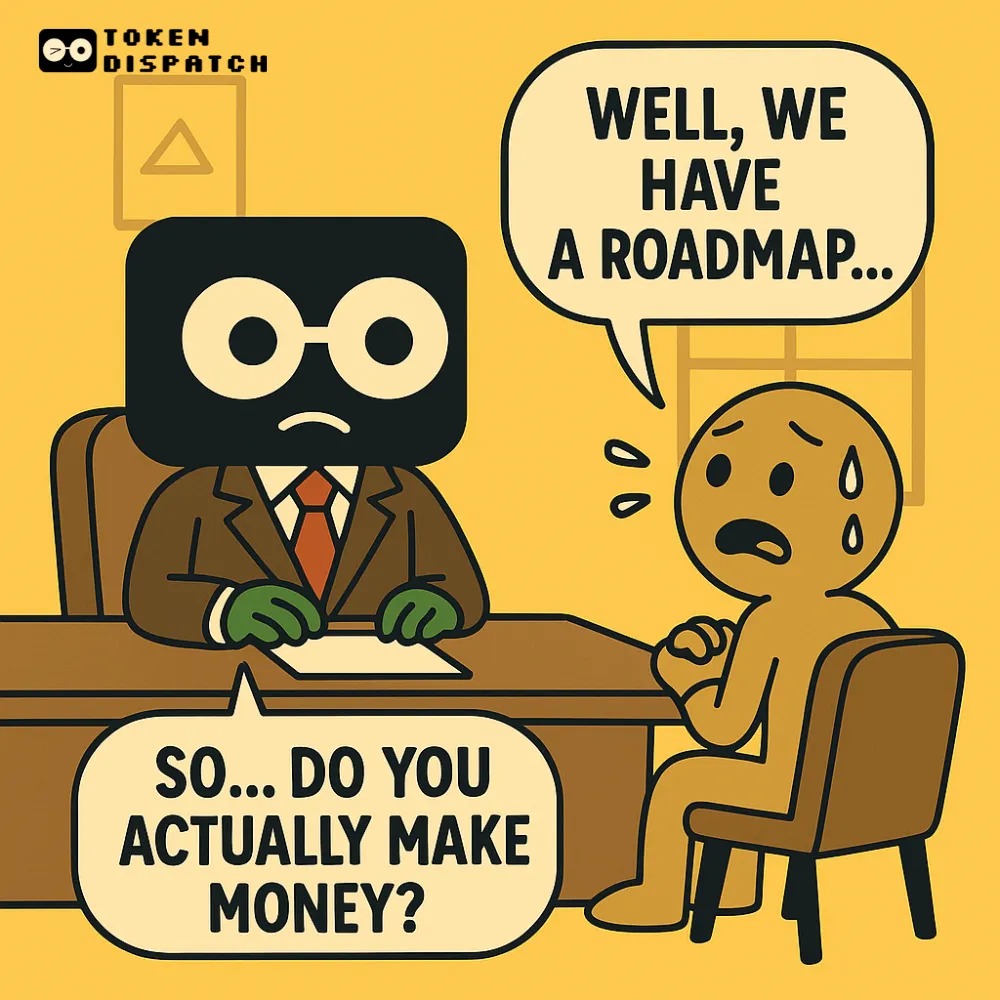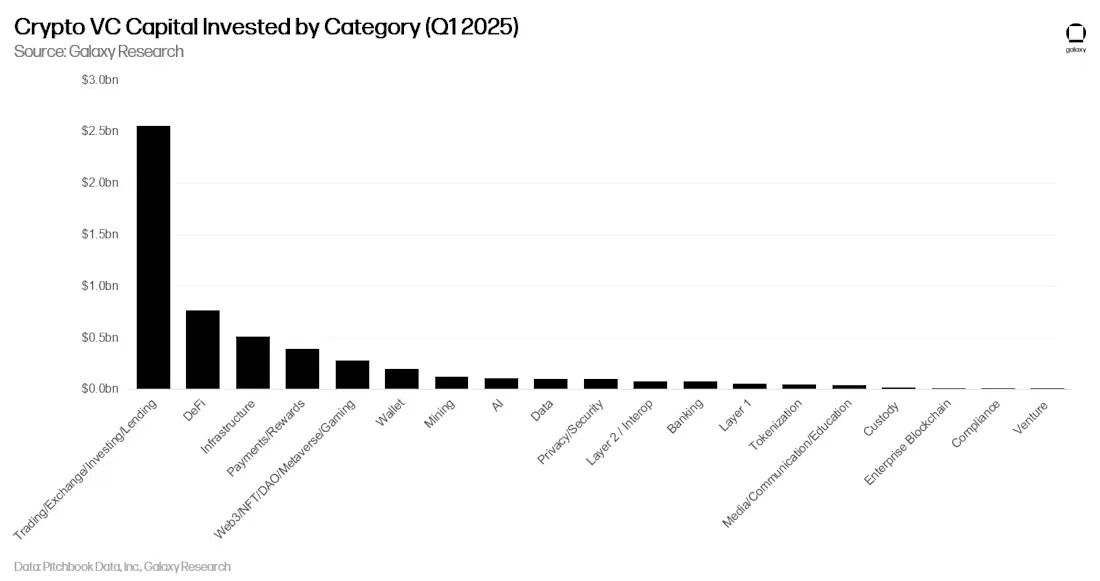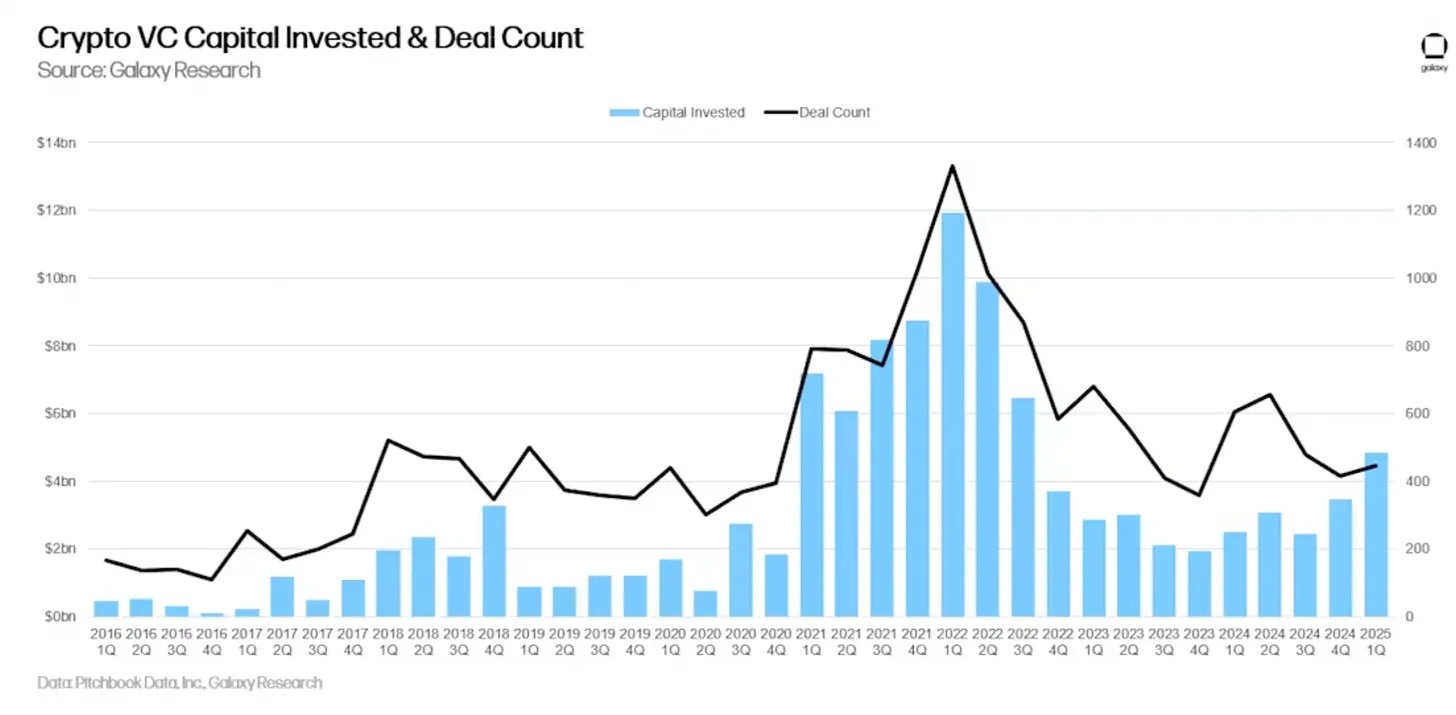Article Author: Thejaswini M A
Article Translation: Block unicorn

Preface
I used to get excited about every cryptocurrency funding announcement.
Every seed round seemed like breaking news. "Anonymous team raises $5 million for revolutionary DeFi protocol!"
I would obsessively research founders, dive into their Discord, trying to understand what made the project special.
Fast forward to 2025. Another funding round appears in my news headlines. Series A. $36 million. Stablecoin payment infrastructure.
I categorized it under "enterprise blockchain solutions" and then moved on to other things.
When did I become so... pragmatic?
Since 2020, late-stage crypto venture transactions have surpassed early-stage transactions for the first time.
65% vs 35%.
Read that again.
The industry was once built on pre-seed funding, with anonymous teams building DeFi protocols in garages for innovation.
Now? Series A and later funding are driving capital flow.
What changed?
Everything changed. And yet nothing seemed to change.
Crypto Venture Capital
Venture capitalists in suits. Due diligence transformed from minutes to months.
Regulatory compliance. Institutional adoption.
Professional project pitches, not anonymous Discord messages.
KYC processes. Legal teams. Truly meaningful revenue models.
Companies like Conduit raised $36 million for "unified on-chain payments". Beam raised $7 million for "stablecoin-based payment services".
These are infrastructure projects. B2B solutions. Enterprise-level platforms.
Boring, profitable, scalable businesses.
Crypto venture capital headlines always love to exaggerate numbers, so let's start with the facts:
Q1 2025: 446 transactions totaling $4.9 billion (40% quarter-on-quarter growth).
Year to date: Total of $7.7 billion, potentially reaching $18 billion in 2025.
And the issue is: MGX (Abu Dhabi sovereign fund) wrote a $2 billion check to Binance.
This perfectly reflects the current venture capital environment: a few massive transactions distort the data, while the overall ecosystem remains subdued.
According to Galaxy Research, the correlation between Bitcoin price and venture activity - reliable for years - broke in 2023 and has not recovered.
Bitcoin hits new highs, yet venture activity remains low. It turns out, when institutions can buy Bitcoin ETFs, they don't need to fund risky startups to get crypto exposure.
Venture Capital Reality Check
Crypto venture capital dropped 70% from its 2022 peak of $23 billion to just $6 billion in 2024.
Transaction numbers plummeted from 941 in Q1 2022 to 182 in Q1 2025.
But this should terrify every founder claiming the "next big thing" - of the 7,650 companies that raised seed funding since 2017, only 17% made it to Series A.
And merely 1% reached Series C.
This is the maturation of crypto venture capital, and it will be painful for those who thought the feast would last forever.
Category Rotation
The hot narratives of 2021-2022 - gaming, Non-Fungible Tokens, DAOs - have almost disappeared from venture interest.
In Q1 2025, companies building trades and infrastructure attracted most venture capital. DeFi protocols raised $763 million. Meanwhile, the Web3/Non-Fungible Token/DAO/gaming categories, which once dominated transaction numbers, have slipped to fourth place in capital allocation.

This is venture capital finally placing revenue-generating businesses above narrative-driven speculation.
Infrastructure truly driving crypto transactions is getting funded.
Applications people actually use are getting funded.
Protocols generating real fees are getting funded.
And everything else will increasingly lack capital.
Artificial Intelligence has also become a major competitor in venture capital.
Why bet on crypto gaming when you can bet on AI applications with clearer revenue paths? The opportunity cost of crypto-native applications has significantly shifted against projects unable to demonstrate immediate utility.
Graduation Crisis
Let's dig out the most thought-provoking statistic from the data: the crypto graduation rate from seed to Series A is 17%.
This means for every six seed-funded companies, five will never receive meaningful follow-on funding.
Compared to traditional tech, where about 25-30% of seed-round companies reach Series A, you start to understand the severity of the problem.
Crypto's success metrics have fundamentally been flawed.
Why? Because for years, crypto's script was simple: raise venture capital, build something that looks innovative, launch a token, let retail investors provide exit liquidity. VCs didn't need companies to truly graduate through funding rounds because public markets would bail them out.
This safety net has disappeared. Most tokens issued in 2024 trade at a fraction of their initial valuation. EigenLayer's EIGEN was issued at a fully diluted valuation of $6.5 billion and has since dropped 80%. Projects with monthly revenues exceeding $1 million are rare.
When the token listing path reaches its end, true graduation rates gradually emerge. And the results are not optimistic. The result? The questions VCs now ask are identical to what traditional investors have been asking for decades: "How do you make money?" and "When will you become profitable?" Clearly a revolutionary concept in the crypto space.
Centralization Takeover
While transaction numbers have significantly dropped, transaction sizes have changed interestingly. Since 2022, the median seed round has grown significantly, despite fewer overall funded companies.

This indicates an industry consolidating around fewer, larger bets. The era of "spray and pray" seed investments is over.
The message to founders is clear: if you're not in the core circle, you might not get funding. If you haven't secured funding from top-tier funds, your chances of subsequent funding drop dramatically.
This centralization is not limited to funding.
Data shows that 44% of companies in a16z's portfolio have a16z participating in subsequent funding rounds.
For Blockchain Capital, this ratio is 25%. The best funds are not just picking winners but actively ensuring their portfolio companies continue to receive funding.
Our Perspective
We've all witnessed the transformation from "revolutionary DeFi protocols" to "enterprise blockchain solutions".
Honestly? I'm conflicted.
Part of me misses that chaos. The violent fluctuations. Anonymous teams with Discord nicknames raising millions for ideas that sounded like fever dreams.
There was a purity in that madness. Just builders and believers betting on a future traditional finance couldn't even imagine.
But another part of me - the one that has witnessed too many promising projects fail due to weak fundamentals - knows this adjustment was inevitable.
For years, crypto venture capital operated fundamentally incorrectly. Startups could raise funds based on a whitepaper, launch tokens to retail investors for liquidity, and call it success regardless of whether they built something users actually wanted.
The result? An ecosystem optimized for hype cycles rather than value creation.
Now, the industry is experiencing a long-overdue transition from speculation to substance.
The market is finally starting to apply performance standards that should have existed from the beginning. With only 17% of seed-stage companies entering Series A funding - this means market efficiency has finally caught up with an industry that was once artificially supported by over-narration.
This brings both challenges and opportunities. For founders accustomed to raising funds based on token potential rather than business fundamentals, the new reality is brutal. You need users, revenue, and a clear path to profitability.
But for companies building solutions to real problems and genuine businesses, the environment has never been better. Reduced funding competition, more focused investors, and clearer success metrics.
"Tourist funds" have left, leaving behind the massive capital needed for true startups. The remaining institutional investors are not looking for the next "meme coin" or speculative infrastructure investments.
The founders and investors who survive this transformation will build the infrastructure for the next chapter of cryptocurrency. Unlike the previous cycle, this time it will be built on business fundamentals, not token mechanisms.
The gold rush is over. Mining operations have just begun.
Although I said I missed that chaos? This is exactly what cryptocurrency needs.





